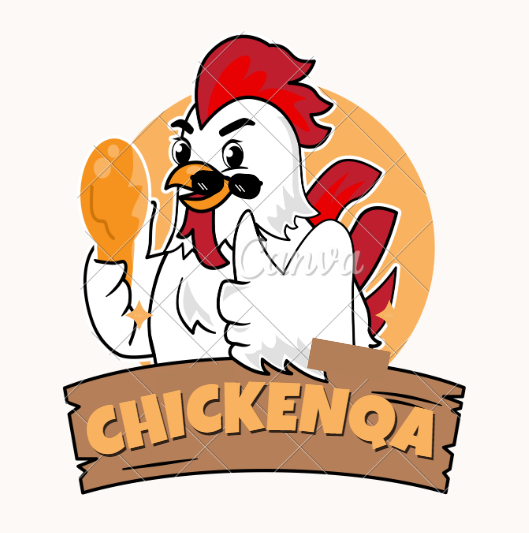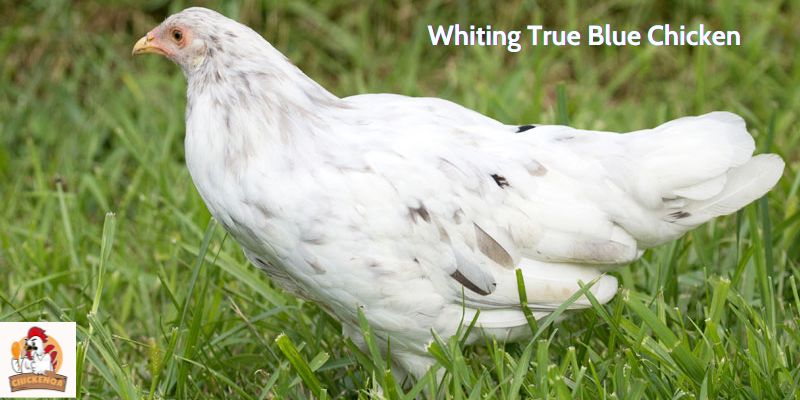Collectors of rainbow egg baskets can celebrate because a stunning new blue egg layer has arrived! If you’re interested, Chickenqa.com have all the information you require about the Whiting True Blue Chicken. In this article, we’ll discuss the history of the chicken, its traits, uses, and general suitability for your environment. Let’s get started!
What Makes A True Blue?
A little introduction to chicken genetics may help illustrate the significance of a good breeding program before we discuss the history of True Blue. For a moment, let’s return to biology from middle school!
A hen must possess 1 set of the dominant blue shell gene in order to lay blue eggs. Due to this gene, an enocyanin pigment rather than an overlay over a white shell is applied to the egg by the hen’s body during the development of the shell. This explains why brown shells are white on the interior with a brown bloom piled on top, but blue shells are entirely blue.
By crossing a breed with high production, like the leghorn, with a breed that lays blue eggs, like the Ameraucana, Dr. Whiting was able to produce an abundant blue layer. A hybrid chicken was produced by mating these two distinct breeds, and its early generations frequently produced surprising outcomes.
The chicks that hatched with desired features were bred together throughout time, and this resulted in generations of a breed with predictable outcomes and stable genetics. This process, termed as selective breeding, ensures that all chicks born of two True Blue parents will reproduce similarly.
Everything about Whiting True Blue Chicken You Need To Know
1. Presentation and Accepted Standard
The Whiting True Blue Chicken is a rare breed that surprises even seasoned chicken keepers with its ever-changing rainbow colors of colour and pattern combinations. With no established benchmarks to measure against, it is not currently recognized by the American Poultry Association (APA), but it might do so in the future.
For the APA to take it into consideration, it still needs to mature as a breed and meet specific criteria. For these birds, some of the colors that appear repeatedly include:
- Blue Silver
- Bluish wheat
- Blue, red
- Citrus blue
- A deep blue
- Red with black breasts
- Black
Although we are unsure of the birds’ future appearance, we are confident that their stunning blue eggs will continue to be produced and that they won’t be significantly altered. The primary benefit and function of these birds is to add color and variety to egg baskets across the nation.

2. The character of Whiting True Blue Chicken
The chicken type under consideration is of the Standard variety, falling into the class of Not a standard classification. This breed is deemed kid-friendly, making it a suitable choice for families. While it is not particularly broody, its heat hardiness is excellent, and it displays good resistance to cold conditions. For optimal well-being, each bird requires a space of 4 square feet. The breed is also beginner-friendly, making it suitable for those new to chicken keeping. In terms of egg production, it is capable of yielding between 250 to 300 eggs per year, boasting a large egg size and distinctive blue egg color.
This versatile breed serves a dual purpose, excelling in both egg production and meat yield. When fully mature, the chickens weigh in at 5.5 to 7 pounds. Unlike some other breeds, this one is not a sex-link variety. Its comb type is classified as a pea. However, it is not considered a heritage breed. These chickens are typically ready for processing at around 20 weeks of age. In terms of lifespan, they can live anywhere from 5 to 10 years. If considering purchasing, it’s worth noting that the cost of a male chicken is approximately $3.71, while a female chicken is priced at around $5.48.
3. Disposition and Temperament

Whiting True Blue Chicken strikes the ideal blend between tenacious independence and effective pest management. Although they could take longer than other breeds to get up to people, their love of freedom allows them to thrive in yards and gardens with little maintenance from their owners.
In actuality, you’re much more likely to have trouble getting this breed back into its coop or run than you are to need to “baby” it along. However, as they are not known for being sociable or fond of people, these feathered buddies might not be the best choice if you’re looking for friendship.
On the plus side, they’re tough tiny ones who will fit right in with your placid flock’s established pecking order. They will be kind to their flockmates because they are courteous and respectable birds. We strongly advise that you only keep them with other kind, respectable hens who won’t pick fights or cause rifts. Bully breeds are more prone to target them. Additionally, the roosters are often friendly and won’t flog or assault you or guests at your house.
4. Production of Whiting True Blue Chicken’s Meat and Eggs

These adorable hens are popular because of their blue eggs. Whiting True Blue Chicken is fortunate to lay up to an astonishing 300 eggs per year, so you’re in luck. And this manufacturing is able to continue for almost three years, which is practically unheard of for that volume.
They will require plenty of high-protein feed to be healthy while producing that many eggs for you each year, so make sure you give them plenty of it. The fact that these eggs are completely blue throughout—I suppose you could call them pure blue—is what makes them so intriguing.
These eggs are blue on the inside and outside of the eggshell, unlike brown eggs, which are brown on the outside and white on the inside. A distinct quality! They provide high-quality meat, but they don’t grow particularly quickly and aren’t exceptionally huge birds. Although the meat is wonderful, there won’t be much of it, so you’ll need to wait for them to finish.
Are you a good fit for the Whiting True Blue Chicken?
The Whiting True Blue Chicken is the best breed of chicken if you want a friendly breed that is good at free-ranging, lays lots of blue eggs, is resistant to many diseases and parasites, and is gentle with its fellow flock members. You might not appreciate this breed if having a flock full of heritage birds or big, quick-growing meat producers is your first objective.
Conclusion:
With barely thirty years of history, the Whiting True Blue Chicken is a unique breed. Although it hasn’t yet been acknowledged by the APA, thousands of Americans’ hearts and homes have come to embrace it in recent years. We can only assume that as more people become aware of this blue-egg-shelled layer and clever forager, its popularity will grow.
What do you think of this bird? Do you own Whiting True Blue Chicken? How much do you adore these birds?


